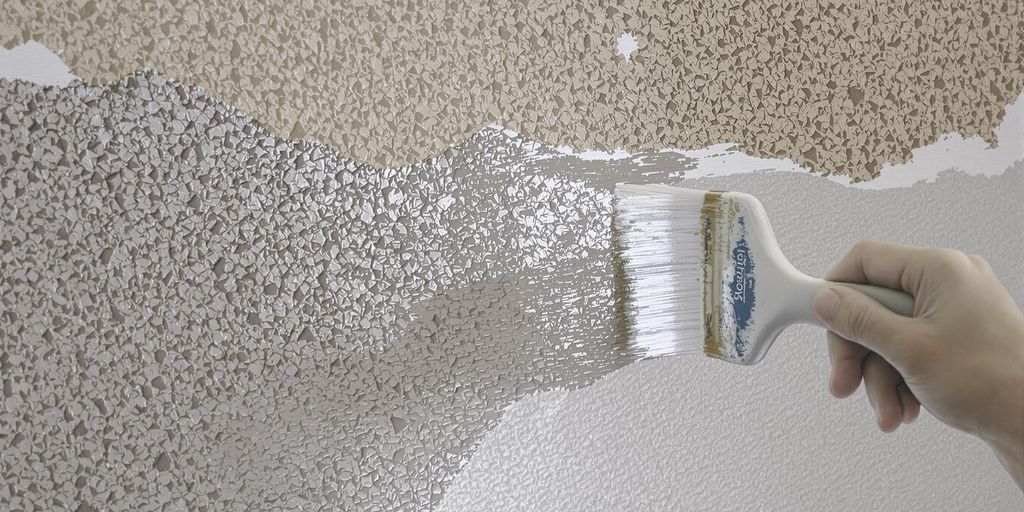Health Hazards of Asbestos Exposure
Asbestos exposure is no small matter. When asbestos fibers become airborne and are inhaled, they can lodge deep within the lungs, leading to severe health issues over time. Diseases like lung cancer, mesothelioma, and asbestosis have all been directly linked to asbestos exposure. These conditions often develop slowly, sometimes taking decades to appear, which makes early detection almost impossible. For individuals undergoing [addiction rehab](https://addictioncenter.com/), the added stress of potential asbestos exposure can complicate their recovery journey, highlighting the importance of a safe environment.
Why Asbestos Becomes Dangerous When Disturbed
The key danger with asbestos lies in its disturbance. When asbestos-containing materials are cut, drilled, or even sanded, tiny fibers are released into the air. These fibers are not visible to the naked eye, making them particularly insidious. While intact asbestos is generally safe, any activity that disrupts it can turn a harmless material into a serious health hazard. This is why proper handling and precautions are critical, whether you’re painting over asbestos or considering other options.
Common Places Where Asbestos Is Found
Asbestos was widely used in construction and manufacturing for decades, so it can still be found in many older buildings. Common locations include:
- Insulation materials, particularly around pipes and boilers.
- Roofing shingles and siding.
- Floor tiles and adhesives.
It’s also not uncommon to find asbestos in textured paints and coatings used in older homes. Knowing where asbestos might be hiding is the first step in managing it safely. For those in addiction rehab facilities, ensuring these environments are free from asbestos risks is crucial to maintaining both physical and mental well-being.
Can Painting Over Asbestos Materials Make Them Safe?
The Concept of Encapsulation
Encapsulation refers to the process of sealing asbestos-containing materials (ACMs) to prevent the release of harmful fibers into the air. This is often achieved using specialized coatings, including paints, that create a barrier over the material. The idea is straightforward: by covering the asbestos with a durable layer, you minimize the risk of fiber release without the need for costly removal. However, encapsulation is not a one-size-fits-all solution and must be approached with care.
How Paint Acts as a Barrier
When applied correctly, paint can act as a physical barrier that locks asbestos fibers in place. This is particularly useful for materials like asbestos siding, flooring, or ceiling tiles that are in good condition. The paint forms a protective layer, reducing the risk of fibers becoming airborne due to minor disturbances. It’s important to use paints specifically designed for this purpose, as regular household paints may not provide the necessary adhesion or durability to effectively encapsulate asbestos.
Limitations of Painting as a Safety Measure
While painting can be a practical way to manage asbestos, it has its limitations:
- Not Suitable for Damaged Materials: If the asbestos material is already crumbling or deteriorating, painting over it won’t solve the problem. In such cases, professional intervention is required.
- Temporary Solution: Over time, the paint layer can wear down, especially in high-traffic or exposed areas. Regular maintenance and inspections are needed to ensure the barrier remains intact.
- Doesn’t Eliminate the Risk: Painting doesn’t remove the asbestos; the material still poses a potential hazard if disturbed in the future.
In summary, painting over asbestos can be a safe and cost-effective way to manage the material, but only under the right conditions. Always assess the condition of the asbestos and consult professionals if you’re unsure about the safety of this approach.
Preparing Asbestos Surfaces for Painting
Cleaning Without Releasing Fibers
Before painting asbestos surfaces, cleaning must be done carefully to avoid releasing harmful fibers into the air. Begin by gathering essential supplies, such as a low-pressure water sprayer, a soft-bristled brush, mild detergent, and protective gear like gloves, goggles, and a mask. Follow these steps:
- Wet the surface gently with water using a low-pressure sprayer. This prevents dust and fiber release.
- Use a soft-bristled brush with a mixture of water and mild detergent to remove dirt, mold, and grime. Scrub lightly to avoid disturbing the asbestos material.
- Rinse thoroughly with water to remove soap residue and let the surface dry completely before proceeding.
Avoid using high-pressure washers, as they can damage the material and release asbestos fibers into the air.
Inspecting for Damage Before Painting
Once the surface is clean, inspect it for any cracks, chips, or other signs of damage. Damaged asbestos materials are more likely to release fibers and should be addressed before painting. Minor cracks can be sealed with high-quality exterior caulk, while larger issues may require the expertise of a professional. Always ensure the surface is stable and intact before moving forward.
Choosing the Right Tools and Materials
Selecting the proper tools and materials is key to ensuring a safe and effective painting process. Use brushes and rollers designed for smooth application, and opt for paints specifically formulated for asbestos encapsulation. Protective equipment, such as masks and gloves, should always be worn during preparation and painting to minimize exposure risks. For surfaces like asbestos siding, proper preparation ensures long-lasting results and reduces the likelihood of fiber release over time.
Selecting the Right Paint for Asbestos Surfaces
Features to Look for in Paint
When painting asbestos surfaces, choosing the right paint is a critical step. You’ll need a product that is durable, flexible, and specifically designed to seal porous materials. Acrylic latex paint is often the top choice because it adheres well and offers long-term protection. Look for paints with added UV protection and mildew resistance to maintain the surface over time. For instance, rehab facilities often prefer these paints for their low-maintenance and safety features.
Why Primer Is Essential
Skipping the primer step is a mistake you can’t afford to make. Asbestos surfaces are highly porous, and a quality primer helps to seal them, creating a smooth base for the paint. Latex-based primers work best for this purpose. They not only enhance adhesion but also ensure that the paint lasts longer. This is especially important in environments like a rehab, where durability and safety are paramount.
Recommended Paint Products for Asbestos
Several brands offer paints suitable for asbestos surfaces. Here are some highly recommended options:
- Sherwin Williams Loxon – Known for its superior adhesion and weather resistance.
- Benjamin Moore Exterior Acrylic Latex – A trusted choice for its flexibility and durability.
- PerfectPaint – Specifically designed for asbestos encapsulation, making it a safer option.
Each of these products is ideal for creating a safe, long-lasting finish, whether you’re updating a home or maintaining a rehab facility. Always follow the manufacturer’s instructions for the best results.
Step-by-Step Guide to Painting Asbestos Materials
Safety Precautions to Follow
Before starting, ensure safety is your top priority. Asbestos fibers can pose serious health risks if disturbed. Wear protective gear, including a high-quality respirator, gloves, and goggles. Make sure the area is well-ventilated but avoid creating drafts that might spread fibers. Consult a certified asbestos professional to evaluate the condition of the material and determine if painting is a safe option.
Applying Primer and Paint
- Clean the Surface: Gently clean the asbestos surface using a damp cloth or a low-pressure water spray. Avoid scrubbing or using abrasive tools that could release fibers.
- Inspect for Damage: Check for cracks or deterioration. Repair minor issues with a suitable filler. If extensive damage is present, consult a professional.
- Apply Primer: Use a high-quality primer designed for asbestos surfaces. This ensures the paint adheres properly and provides an additional protective layer.
- Paint the Surface: Choose a paint that is durable and designed to encapsulate asbestos materials. Apply evenly with a roller or brush, avoiding excessive pressure.
- Allow Proper Drying: Let each coat dry fully before applying the next to achieve a smooth and safe finish.
Post-Painting Maintenance Tips
- Regularly inspect the painted surface for signs of wear or damage.
- Touch up any areas where the paint has chipped or peeled to maintain the protective barrier.
- Avoid drilling or cutting into the painted material to prevent fiber release.
Legal and Regulatory Considerations
Understanding Local Laws on Asbestos
Dealing with asbestos isn’t just about safety; it’s also about staying within the law. Local, state, and federal regulations dictate how asbestos-containing materials should be handled, including whether painting over them is allowed. These laws are designed to protect public health and the environment. Violating these rules can lead to hefty fines or legal action. Always check with your local authorities to understand the specific guidelines in your area.
When to Consult a Professional
Sometimes, it’s not worth the risk to handle asbestos on your own. If you’re unsure about the condition of the material or the legality of painting over it, consulting a professional is your safest bet. Experts can assess the situation and recommend whether painting, encapsulation, or removal is the best course of action. Evoke Wellness advocates for hiring licensed specialists to ensure compliance and safety.
Permits and Certifications Required
Before you even think about painting over asbestos, you may need permits or certifications, depending on your location. These documents ensure that all work complies with legal standards. For example, the abatement of asbestos-containing materials and lead-based paint often requires specific certifications for both workers and contractors. Make sure to verify these requirements to avoid complications down the line.
Alternatives to Painting Asbestos Materials
Encapsulation with Specialized Products
Encapsulation involves covering asbestos-containing materials with a protective layer to prevent fiber release. Specialized coatings like those designed for insulation or concrete surfaces can seal asbestos effectively. These products are often non-toxic and easy to apply, making them a safer alternative to removal. For example, some specialized coatings can be used as a preparatory step for asbestos removal or as a standalone solution when removal isn’t feasible. This method is particularly suited for materials like black mastic tiles or asbestos insulation.
Covering Asbestos with New Materials
Another approach is to install new materials over existing asbestos surfaces. This could include:
- Installing suspended ceilings to cover asbestos-containing ceiling tiles.
- Laying decorative tiles or new flooring over asbestos tiles.
- Adding drywall or paneling over asbestos-containing walls.
This method not only hides the asbestos but also reduces the chance of disturbing it during daily activities. However, it’s crucial to ensure the asbestos material is stable and undamaged before proceeding.
When Removal Is the Best Option
In some cases, removal might be the only viable choice. This is often true when the asbestos material is severely damaged or located in high-traffic areas where it’s likely to be disturbed. Removal should always be performed by licensed professionals who follow strict safety protocols. While more expensive, this option eliminates the risk of future exposure entirely. It’s also worth noting that removal may require specific permits and adherence to local regulations.
Common Mistakes to Avoid When Painting Asbestos
Using High-Pressure Cleaning Methods
One of the most common errors people make is using high-pressure cleaning tools, such as power washers, to clean asbestos surfaces. This can disturb the material, causing harmful fibers to become airborne. Instead, use a low-pressure water spray combined with a soft-bristled brush to gently clean the surface. Avoiding fiber release is absolutely critical when handling asbestos-containing materials.
Skipping the Primer Step
Skipping primer might seem like a time-saving step, but it’s a mistake that can compromise the durability of your paint job. Asbestos surfaces are often porous, which makes primer essential for proper paint adhesion. Choose a high-quality primer specifically designed for asbestos or similar materials to ensure the paint stays intact for years.
Ignoring Safety Guidelines
Neglecting safety precautions is a serious mistake that can put your health at risk. Always wear protective gear, including a mask, gloves, and goggles, to minimize exposure to asbestos fibers. Additionally, make sure the work area is well-ventilated and free of unnecessary disturbances. If you’re unsure about any aspect of the process, consult a professional. Safety should always be the top priority when dealing with asbestos.
Long-Term Maintenance of Painted Asbestos Surfaces
Regular Inspections for Wear and Tear
Keeping an eye on the condition of painted asbestos materials is critical to ensure their safety over time. Regular inspections are necessary to identify any signs of damage, such as peeling paint or cracks, which could expose asbestos fibers. Property owners should aim to check these surfaces at least once a year, but more frequent inspections may be necessary in high-traffic areas or harsh environments. If any damage is discovered, immediate action should be taken to repair or reapply the protective treatment.
Repainting and Touch-Ups
Over time, paint can degrade due to exposure to elements like sunlight, moisture, or physical contact. To maintain the integrity of the encapsulation, periodic repainting or touch-ups may be required. Use the same type of high-quality paint and primer originally applied to ensure consistent protection. It’s also a good idea to keep a record of the products used and the dates of application for future reference.
Monitoring for Potential Fiber Release
Even with proper maintenance, there’s always a small risk of asbestos fibers becoming airborne if the painted surface is compromised. Regular air quality checks can be performed to monitor for any signs of fiber release. While professional testing is the most reliable option, at-home testing kits are also available for basic monitoring. If any asbestos fibers are detected, consult a specialist immediately to reassess the safety of the area.
The Role of Professionals in Managing Asbestos
When to Hire an Asbestos Specialist
Managing asbestos is not something to take lightly. While some tasks, like painting over undamaged asbestos materials, might seem manageable, the risks of improper handling are significant. Professionals have the training and equipment necessary to safely assess, encapsulate, or remove asbestos-containing materials. If there’s visible damage, like cracks or crumbling, or if you’re planning renovations that could disturb asbestos, it’s time to call in the experts. Companies like Serenity at Summit can provide specialized services to ensure safety and compliance with regulations.
Benefits of Professional Encapsulation
Encapsulation involves sealing asbestos materials to prevent fiber release, and it’s often a safer alternative to removal. Professionals use specialized products designed for this purpose, ensuring the asbestos remains intact and undisturbed. Hiring experts also means you won’t have to worry about accidentally exposing yourself or others to harmful fibers. Plus, they’ll know the best methods and materials to use, leaving you with peace of mind.
Cost Implications of Professional Services
While professional services can be expensive, they’re often worth the investment. Costs vary depending on the scope of the job, but they typically include inspection, materials, labor, and disposal. Attempting to manage asbestos on your own might seem like a cost-saving measure, but the potential health risks and legal consequences of improper handling can end up costing far more. With professionals like Serenity at Summit, you’re paying for safety, expertise, and compliance with legal standards.
Environmental and Health Impacts of Asbestos
How Asbestos Affects Indoor Air Quality
When asbestos-containing materials deteriorate or get disturbed, they release tiny fibers into the air. These fibers can linger for long periods, especially indoors, where ventilation may be limited. Breathing in these fibers can compromise air quality and pose serious health risks. Prolonged exposure to airborne asbestos can lead to chronic respiratory issues, even if the exposure levels are low. Maintaining proper sealing and avoiding disturbance of asbestos materials are vital steps to minimize risks.
Disposal of Asbestos-Containing Waste
Disposing of asbestos waste is not as simple as throwing it in the trash. Improper disposal can lead to environmental contamination, as asbestos fibers can easily spread through the air or water. Specialized facilities are required to handle and process asbestos waste safely. When disposing of asbestos, it’s essential to:
- Use sealed, labeled containers to prevent fiber release.
- Transport the waste to a certified disposal site.
- Follow local regulations to avoid fines or penalties.
Global Efforts to Reduce Asbestos Use
While many countries have banned or severely restricted asbestos use, it remains legal in some regions. International organizations and governments are working to phase out asbestos entirely due to its known health and environmental hazards. This includes promoting safer alternatives and raising awareness about its dangers. Collaborative efforts aim to reduce dependency on asbestos and mitigate its impact on public health and the environment.



